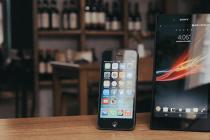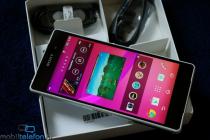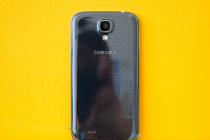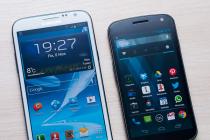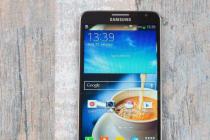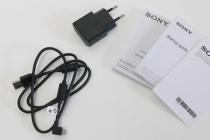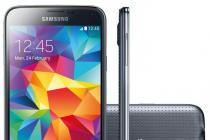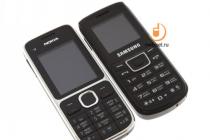Last spring in Barcelona, the international GSM association announced at the annual Global Mobile Awards (Glomo Awards) that new flagship Sony Xperia XZ Premium was named the best in the category "New Smartphones and Mobile Devices at MWC 2017". And this is not the only award received by the favored press and critics for the Sony Xperia XZ Premium during the exhibition. In this regard, the President and CEO of Sony Mobile Communications, Hiroki Totoki, said: "The Xperia XZ Premium is the most technically advanced smartphone we have ever made." At a minimum, the Xperia XZ Premium became the world's first smartphone with a 4K HDR display (5.5 ″), as well as a new Motion Eye camera capable of recording videos at 960 frames per second and playing them in slow motion. four times slower than other smartphones. Finally, the new Japanese flagship has arrived in Russia and is now available in official retail stores.
Super processor with heart for battery
With a revamped camera, the manufacturer has a real ace up its sleeve, especially in the case of fast movements - in super slow motion it almost never comes out of amazement. Big size and high weight The camera is weak in low light Especially there are many frames around the display. The difference is noticeable on closer inspection, but not in weight.
The camera solves with 19 megapixels, retains the sharpness of movements and provides slow shots. The Japanese are exaggerating, but again with camera software. Add to that, which might affect the test a little. The case is mostly made of metal but is not versatile. It can never penetrate, the device is dustproof and waterproof.
Key features of Sony Xperia XZ Premium (G8142)
- SoC Qualcomm Snapdragon 835 (MSM8998) Quad Kryo @ 1.9 / 2.4 GHz
- GPU Adreno 540
- Operating room Android system 7.1.1
- 5.5 ″ IPS touchscreen display, 3840 × 2160, 801 ppi
- Random access memory (RAM) 4 GB, internal memory 64 GB
- Nano-SIM support (2 pcs.)
- MicroSD support up to 256GB
- GSM / GPRS / EDGE networks (850/900/1800/1900 MHz)
- WCDMA / HSPA + networks (850/900/1700/1900/2100 MHz)
- FDD LTE Cat.16 networks
- Wi-Fi 802.11a / b / g / n / ac (2.4 and 5 GHz) MIMO
- Bluetooth 5.0
- GPS, A-GPS, Glonass, BDS
- USB 3.1 Type-C, USB OTG
- Main camera 19 MP, autofocus, f / 2.0, 4K video
- Front-camera 13 MP, f / 2.0
- Proximity, lighting, pressure sensors, magnetic field, accelerometer, gyroscope, step counter
- Super slow motion video at 960 fps
- Dust and moisture protection IPS65 / 68
- Battery 3230 mAh
- Dimensions 156 x 77 x 7.9mm
- Weight 191 g
Appearance and usability
Sony Mobile remains true to tradition, this applies to both the appearance of its smartphones and the software shell. In the design of the novelty, the same familiar Loop Surface principle is used: the metal frame, bending, with its curved edges enters all panels - front, back and side. The frame itself is made of polished metal to a mirror-like shine, it is echoed by two glass panels of Gorilla Glass 5. As a result, we have one of the most slippery and easily soiled smartphones, in this only Xiaomi Mi Mix can be compared with it.
Fast charger not included
On the right side is the power switch with a built-in fingerprint sensor, camera button and volume rocker. They are easily accessible, all buttons are in the lower half. In general, the smartphone looks very high quality. But that's enough for a crisp 428 dpi pixel density. In addition, the screen shines brightly and offers beautiful contrasts and colors. Low resolution also reduces battery life.
Strong camera, weak software
The performance is more than adequate. It focuses at lightning speed with additional laser focus, even in low light. Preventive AF, which “anticipates” where a moving subject is going, also works reasonably well.

At the same time, the design and design are really impressive: the case with a mirror-like sheen with sharp angles and flat end panels looks at least impressive, and maybe even status. Another thing is that all this splendor runs counter to ergonomics and comfort: sharp corners take up a lot of extra space in your pocket and dig into your hips, and shiny surfaces, of course, are instantly covered with fingerprints.
The results look great at first glance. They offer strong yet natural colors, strong contrasts, and well-lit subjects. However, if you zoom in on the image, you can see that software sometimes goes too far and therefore blurs the details. It is often too bright in low light and relatively fast recordings in relatively dark areas.
It is often called, the first impression counts. Very impressive and enjoyable to watch. It's proven, but not very innovative. Is this enough to get out of the crowd? Take a look at the pictures in our gallery. But let's give the new top smartphone one more chance: is there such a thing as love at first sight?

This is not to say that glass panels themselves are very slippery, but no one usually holds a smartphone for them. But the polished and varnished sides of the convex metal frame are extremely slippery, so it is rather difficult to lift the smartphone from the table.
Slowest Mobile: Super Slow Motion Camera
And - and this is important - there are two "secret ingredients" that can be mastered by the aforementioned balancing act: a dedicated camera for the "super slow", new antennas for the "super fast". For example, if you want to capture an exciting moment. Koepfler in the lake, a skateboard trick or a cat jumping on the bed: a lot of things in slow motion are more dramatic. These super-slow motion shots show completely new detail and movement - almost on par with Hollywood quality.
Fastest mobile phone: more data on mobile
More smartphones are expected to appear soon that support similar high speeds. |
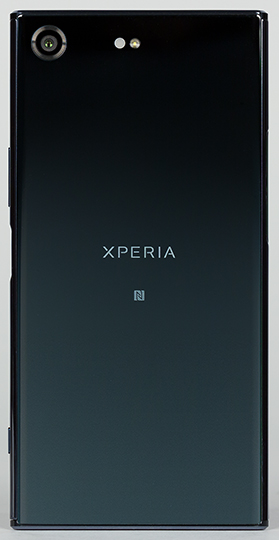 |
As for materials and build quality, here, of course, there can be no complaints, Sony is always in full order with this. But about the dimensions it is worth saying a few words. The Sony Xperia XZ Premium has a 5.5-inch screen, which is not that big by today's standards, but in terms of body dimensions it is comparable to Samsung Galaxy S8 + with significantly more large screen(6.2 ″).
Do you want to know more? And hardly applicable when it comes to production and distribution mobile sensors if you don't know how to use it on your phone in your own directory. With this approach, you will realize that our focus here is almost on this aspect, that in any case, we can squeeze out 100% in a later analysis, which we can certainly highlight in the first place the excellent 920 frames per second offered by the camera. How the hell does he do it? First of all, you will have to be in camera recording mode, and now another small button will appear on the regular start button.

The bezels around the screen look too wide, especially the top and bottom segments, which are 17 mm high, and the bottom is not even touch buttons... A lot of space is empty, and the only explanation for such indents is stereo speakers placed at the top and bottom in the frontal plane.
It is responsible for turning on the slow motion mode, after which you can start recording video by pressing the regular record button. When you want to capture a specific scene at 920 frames per second, you have to press the button a second time and then only take 2 seconds of slow motion video, after which you will see them 6. The camera will continue recording until you press the button pause.
As for the video file, it can be as much as you want, being able to move multiple scenes in slow motion if you want. Click here to see it in full size. This explains why the house chose to keep its maps on this occasion and, unlike other times, go to preserve the exclusivity of its photographic system, at least for good season... This camera is the most attractive feature in our opinion. It has 19 megapixels, face detection, image stabilization and laser focus.

The glass of the panel has barely noticeable curvatures at the transition to the end faces, but only on the sides. There is an LED event indicator above the screen.

The back panel here is also a real glass, it is not plastic, but the same Gorilla Glass 5 as the front. The camera module is single, not double. The camera does not protrude beyond the surface, the back panel is absolutely flat.
Comparison of cameras Xperia XZ Premium and Xperia X
Its greatest virtue is that, following the new concept of "eye movement", its sensor has its own memory; unprecedented quality in mobile phones but which is found in high quality compact cameras. This helps the image processor manage the large amount of information it captures and, as a result, improves focusing and processing speed. In addition, it allows you to record video at very low speed, capture images predictively, and remove distortion around the edges of your photos.
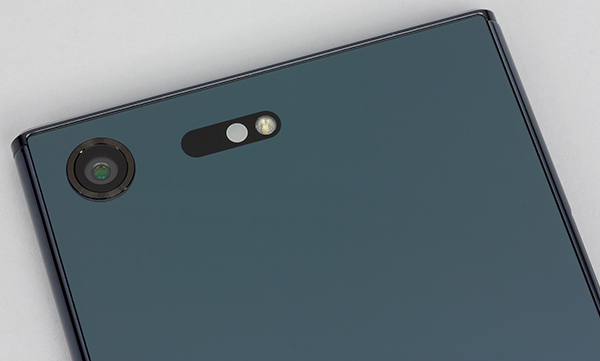
All hardware buttons are located on the right side. The one that is responsible for power and lock has a built-in fingerprint scanner, it is easy to feel it blindly, it is convenient to use. Another button responsible for volume control, on the contrary, is quite smooth, slippery, shallow, sticks out a little outside the body. It is difficult to find it blindly. There is also a third, very small and barely noticeable, it is traditionally for Sony responsible for working with the camera.
Of all these features, the most striking is the Super Slow Camera mode. What is two seconds in real time translates into six seconds, during which you can clearly see how water splashes or explodes a balloon full of brilliance. The result is no doubt impressive.
The camera now automatically detects when there is a scene movement and will start capturing images one second before the shutter button is pressed. Then he offers up to four different photos to choose the best among all. The answer is a resounding yes. In fact, we find one of the most interesting high range options. In good lighting conditions, its full potential is expressed and images are excellent, with good white balance, adequate contrast, great sharpness and vibrant colors.

The card slot is hybrid here: you can install two Nano-SIM cards or replace one of them with a memory card. Sony usually makes two variants of each model - single and dual SIM, and the Xperia XZ Premium is no exception. Only here are not one, but two pull-out trays, and they are covered with a convenient lid that does not need to be squeezed out with a paper clip. All Sony smartphones automatically reboot as soon as the card sled is removed from the case, regardless of whether there are any cards at all.
With poor lighting, on the other hand, it is solvent and an improvement over the firm's previous models is patent. On the other hand, the speakers are not the best on the market, but the quality is sufficient and they are pleased that they direct the sound towards the user, achieving more volume and greater clarity. Meanwhile, the game is a pleasure, regardless of the graphic requirements of the chosen title.
Sony Xperia XZ Premium specifications and test results
This processor has among its advantages improved graphics, superior performance over previous versions, and greater battery efficiency. For practical purposes, this is one of the most exciting experiences we have encountered with a mobile phone.
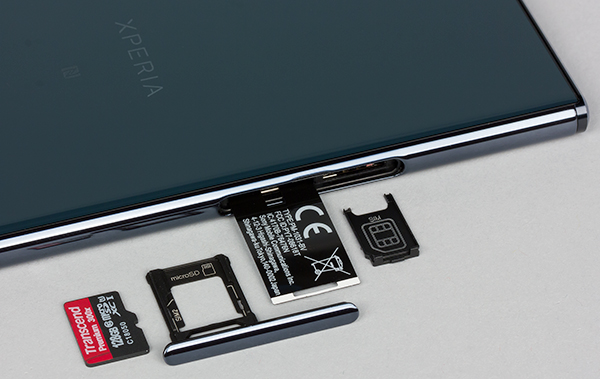
The smartphone is IP65 / IP68 waterproof. The standard assumes that the device can spend up to half an hour underwater, but Sony prohibits this, mentioning only protection from splashing rain or from an accidentally spilled glass.
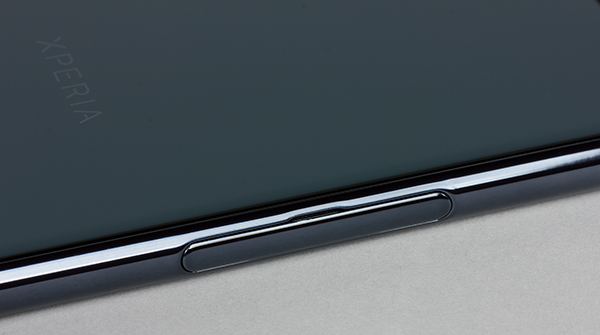
System Memory Test - AndroBench
Autonomy is as expected with a stress-free day of use. Thanks to them, depending on the time and location, some functions or others are activated. We leave for the end the aspect that we consider the weakest: design. This assessment does not help, which is contrary to the current trend, the scope is still very large from above and below.
It is now a fingerprint magnet. We skipped the dual rear camera as it already has most of its competitors and, above all, a design more in line with the latest trends and more compact. In particular, the terminal is capable of recording clips at 960 frames per second, a figure that no other smartphone comes close to. This shooting mode is an evolution of subject tracking that detects movement in a scene and starts taking photographs before you press the shutter, so you capture the right moment.
At the top there is an audio output for headphones (3.5 mm), as well as an auxiliary microphone.
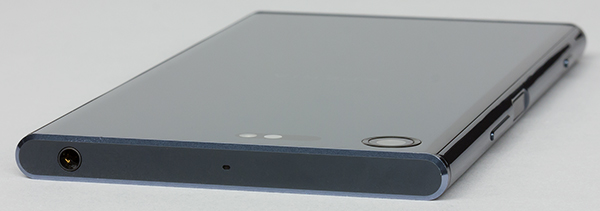
The bottom end is dedicated to the main conversational microphone and a universal connector USB Type-C supporting connection to USB mode OTG.

Now let's see how it unfolds in a real test. We start by making his life easier. Good job white balance, bright colors without saturation, good contrast and excellent sharpness. Again the terminal manages to solve very good aspects such as color reproduction and contrast, with a very wide dynamic range... What Happens When Expanding?
When the magnifying glass is removed, the sharpness starts to suffer slightly, but a very good level of detail is maintained in difficult areas such as the first rope cut, letters on the back of the boat in the second and even buildings in the farthest shot.
The Sony Xperia XZ Premium is available in three color options: Luminous Chrome, Deepsea Black and Bronze Pink. We tested the "regular" black version, but apparently, Sony is betting on the pink bronze. Designer Satoshi Aoyagi particularly commented on this: “We wanted to find a shade that would create a warm feeling while at the same time exemplifying premium design and functionality. Bronze metallic overflow adds depth to the color of the front and back of the smartphone, while diamond cut technology adds extra shine to the top and bottom bezels. "
The main camera of a mobile device is usually located on the back of the body and is used for photo and video shooting
The rough texture of the walnut is captured beautifully in this shot, as well as the rust on the metal and wood grain. However, such a brutal definition is lost as you move away from the center of the shot, but it remains in the corners. On paper, there really aren't many obvious flaws.
Perhaps one of his most outstanding creations, though, is his camera. The barbarity we want to explain better. As we will tell you in the presentation of the device, one aspect that stands out is the built-in memory. That is, the camera sensor includes its own data storage. And while it sounds silly, it opens the door for a lot of tricks.
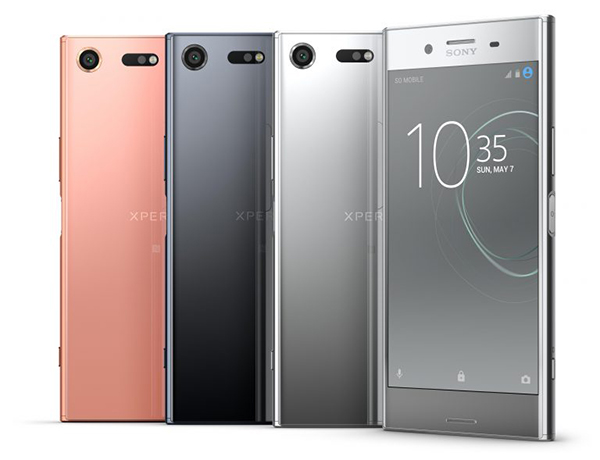
Screen
The Sony Xperia XZ Premium features an IPS display with 2.5D Corning Gorilla Glass 5. Uses Triluminos, X-Reality technologies for mobile devices and Dynamic Contrast Enhancer. The dimensions of the screen are 68 × 121 mm with a diagonal of 5.5 inches. The resolution is 3840 × 2160, the density of points is very high here, about 801 ppi. It is the world's first smartphone with a 4K HDR display.
Forecasting remains the protagonist in the camera
That is, an object that moves quickly does not spoil the photo. In addition to the automatic hybrid predictive approach, which is responsible for anticipating motion, the camera captures 1 second before pressing the shutter button. Each photo generates 4 frames and we can choose the best frame or save four. In addition, we also find distortion prevention technology in photography that is appreciated.
All of this would make a more fluid video possible, without the typical timbres that we find in a scene. We also find things we're used to like manual focus and shutter speed controls. Excellent in every way and with a camera to match.
The frame around the screen is wide by modern standards, more than 4 mm on the sides and 17 mm at the top and bottom. Together with the sharp corners of the case itself, it all looks quite cumbersome.
The brightness of the display can be adjusted manually or set automatic settings based on the operation of the ambient light sensor. The AnTuTu test diagnoses support for 10 simultaneous multitouch touches. The screen supports work with gloves.
 |
 |
Detailed expertise using measuring instruments conducted the editor of the "Monitors" and "Projectors and TV" sections Alexey Kudryavtsev... Here is his expert opinion on the screen of the test sample.
The front surface of the screen is made in the form of a glass plate with a mirror-smooth surface, resistant to scratches. Judging by the reflection of objects, the anti-glare properties of the screen are slightly better than that of the Google Nexus 7 (2013) (hereinafter simply the Nexus 7). For clarity, here is a photo in which a white surface is reflected in the turned off screens of both devices (Sony Xperia XZ Premium, as it is easy to determine, is on the right, then they can be distinguished by their size):

Both screens are dark, but Sony's screen is slightly darker (its brightness in the photo is 107 versus 117 for the Nexus 7). The tripling of reflected objects in the Sony Xperia XZ Premium screen is very weak, which indicates that there is no air gap between the outer glass (aka touch sensor) and the matrix surface (OGS-type screen - One Glass Solution). Due to the smaller number of boundaries (such as glass / air) with greatly different refractive indices, such screens look better in conditions of intense ambient light, but their repair in the case of cracked outer glass is much more expensive, since the entire screen has to be changed. On the outer surface of the screen there is a special oleophobic (grease-repellent) coating (very effective, even better than that of the Nexus 7), so fingerprints are much easier to remove, and appear at a slower rate than in the case of regular glass.
With manual brightness control and with the display of the white field on the whole screen, its maximum value was about 460 cd / m², and the minimum - 4.7 cd / m². The maximum value is high, and given the excellent anti-glare properties, readability even on a sunny day outdoors should be at an acceptable level. In complete darkness, the brightness can be lowered to a comfortable level. Automatic brightness control works according to the light sensor (it is located to the right of the slot of the front speaker). V automatic mode when the ambient light conditions change, the screen brightness both increases and decreases. The operation of this function depends on the position of the brightness control, with it the user can try to set the required brightness level in the current conditions. We slightly increased the brightness in complete darkness and found that in complete darkness the auto-brightness function reduces the brightness to 12 cd / m2, in an office illuminated with artificial light (about 550 lux) it sets to 190 cd / m2, in a very bright environment (corresponds to clear lighting during the day outdoors, but without direct sunlight - 20,000 lux or slightly more) increases to 460 cd / m². The result was quite satisfactory for us. It turns out that the automatic brightness control function works adequately and to some extent allows the user to customize his work for individual requirements. Only at a very low brightness level there is a significant modulation of the backlight, but its frequency is high, about 2.3 kHz, so even in this case there is no visible screen flicker.
This screen uses an IPS type matrix. The micrographs show the typical IPS subpixel structure:
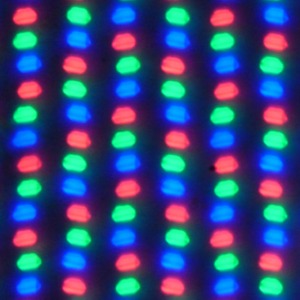
For comparison, you can see the gallery of photomicrographs of screens used in mobile technology.
However, the subpixels themselves are located unconventionally: typical columns go in the horizontal direction, but in each of the columns the triads of subpixels are shifted by one subpixel vertically, first upwards, and three columns downwards. Note that we have already seen a similar arrangement of subpixels in the case of the Sony Xperia Z5 Premium. As a result, the ratio of columns horizontally to triads vertically is 3 to 2, the actual vertical resolution is 1/3 less than the horizontal one (hereinafter, we mean the landscape orientation of the screen). That is, the points (RGB triads) on the screen are actually only 3840 × 1440, and not 3840 × 2160.
Additional tests have shown that not every application is capable of displaying images at this conventional 4K resolution. For example, all tested third party applications believe that the screen has Full resolution HD, that is, 1920 by 1080 pixels, and the image is displayed in this resolution, and the smartphone itself scales the picture to the true screen resolution. Sony's own image demonstrator only (app Album) displays a picture in 4K resolution. The second exception is video output using hardware decoding. Let us consider the features of such an output using the example of a vertical and horizontal worlds with black stripes one pixel thick through a white gap also one pixel thick. The original test image is available at this link, the world is in the center. Here is a snippet of it:
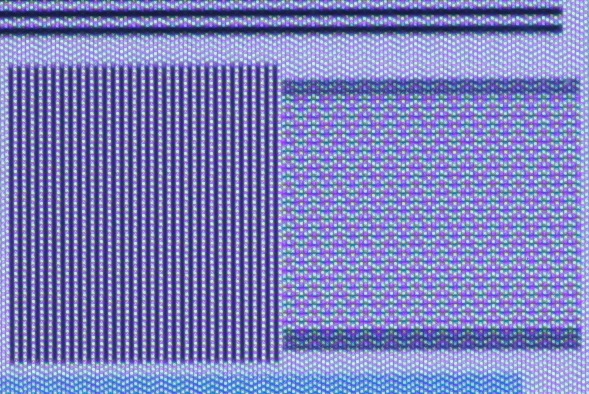
With vertical (on the left) stripes, everything is fine: clear, pixel by pixel. With horizontal ones (on the right side), everything is worse, since the dark gaps are only one subpixel thick and visually the world is seen simply as a gray field. In addition, at the bottom and at the top of the horizontal target, instead of stripes, some kind of mess is displayed - apparently, this is an error in the conversion to the resolution of a strange matrix. However, formally, black and white resolution of 3840 × 2160 pixels is still implemented.
The screen has good viewing angles without inverting tints and without significant color shift, even with large gaze deviations from the perpendicular to the screen. For comparison, here is a photo in which the screens of Nexus 7 and Sony Xperia XZ Premium are displayed the same images, while the brightness of the screens was initially set to about 200 cd / m² (across the white field in the entire screen), and the color balance on the camera was forced to 6500 TO.
White field perpendicular to the plane of the screens:
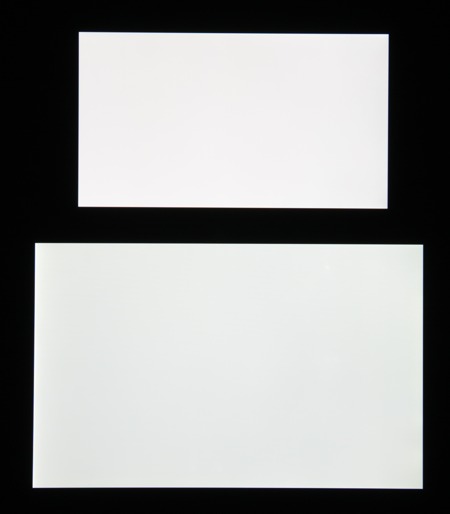
Note the good uniformity of brightness and color tone of the white field.
And the test picture:

The colors on the Sony Xperia XZ Premium display are oversaturated, skin tones are reddish, and color balance is noticeably different from standard. Also, as shown by additional tests, the color contrast is slightly increased.
Now at an angle of approximately 45 degrees to the plane and to the side of the screen:

It can be seen that the colors did not change much on both screens, the contrast remained on good level.
And white box:

The brightness at an angle on both screens has noticeably decreased (at least 5 times, based on the difference in shutter speed), but in the case of the Sony Xperia XZ Premium, the brightness drop is slightly less (the brightness in the photos is 232 versus 226 for the Nexus 7). The black field, when deviated along the diagonal, does not lighten very much and acquires a purple tint. The photos below demonstrate this (the brightness of the white areas in the direction perpendicular to the plane of the screens is the same for the screens!):
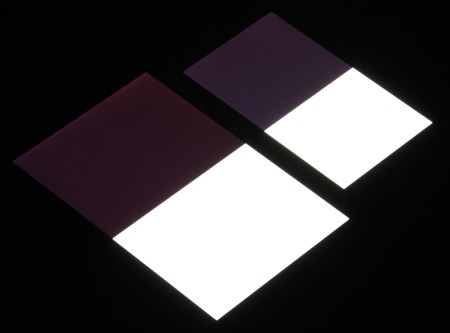
And from a different angle:
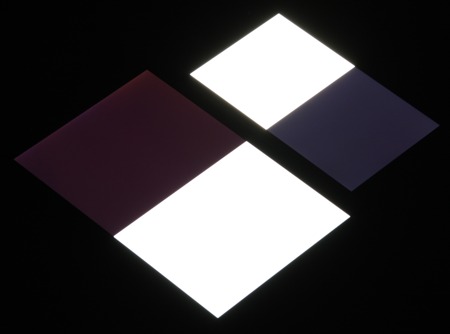
The Nexus 7's black field at the corners is still slightly darker. When viewed from a perpendicular view, the black field uniformity is excellent:
![]()
The contrast (approximately in the center of the screen) is high - about 960: 1. The response time for the transition black-white-black is 24 ms (11 ms on + 13 ms off). The transition between gray tones of 25% and 75% (based on the numerical value of the color) and back takes 34 ms in total. The gamma curve, plotted using 32 points with equal intervals in terms of the numerical value of the shade of gray, did not reveal a blockage in either highlights or shadows, and the exponent of the approximating power function was 2.31, which is slightly higher than the standard value of 2.2. At the same time, the real gamma curve deviates little from the power dependence:
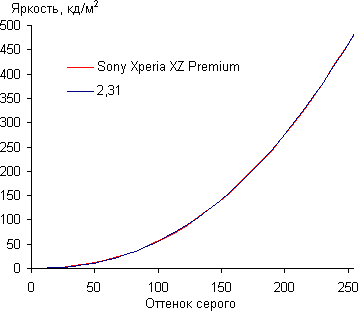
We did not reveal the presence of dynamic adjustment of the backlight brightness in accordance with the nature of the displayed image, which is very good.
By default, the color gamut is noticeably wider than sRGB:

If the image on the screen of this smartphone still seems to someone to be insufficiently "bright" and "colorful", then in the screen settings you can enable Extreme brightness mode.

The result is shown below:

Saturation and color contrast are enhanced even further. The color gamut in this mode almost completely covers the Adobe RGB gamut.

We look at the spectra:

They are typical of Sony's top-end mobile devices. Apparently, this screen uses LEDs with a blue emitter and a green and red phosphor (usually a blue emitter and a yellow phosphor), which, in combination with special matrix light filters, allows obtaining a wide color gamut. Yes, and in the red phosphor, apparently, the so-called quantum dots are used. Unfortunately, as a result, the colors of images - drawings, photographs and films - oriented to the sRGB space (and there are the overwhelming majority of them) have an unnatural saturation. This is especially noticeable on recognizable shades, such as skin tones. The result is shown in the photos above.
However, not everything is so bad, in the mode Professional coverage is adjusted to sRGB borders:
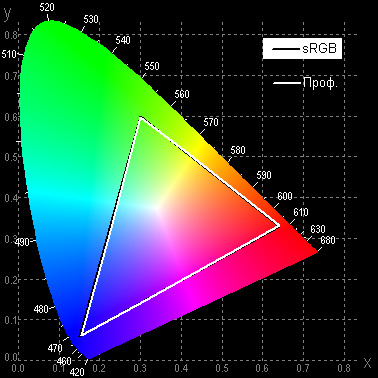
We look at the spectra:

It can be seen that in this mode the color components are mixed with each other, which makes it possible to reduce the color gamut. Let's look at the test image in this mode:

So much better! Hence the advice: having a smartphone at your disposal, be sure to select the mode Professional, only in this mode you can view photos and watch movies obtained from most of the available common user sources.
By default, the balance of shades on the gray scale is slightly compromising, since the color temperature is higher than the standard 6500 K, and the deviation from the spectrum of a black body (ΔE), although not very large, changes noticeably from shade to shade. But at least the color temperature variation is small. (The dark areas of the gray scale can be ignored, since there the color balance does not have of great importance, and the error in measuring color characteristics at low brightness is large.)


This smartphone has the ability to correct the color balance by adjusting the intensities of the three primary colors.
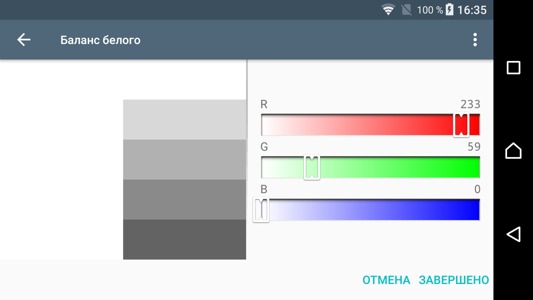
Which is what we tried to do; the result is data signed as Corr. in the graphs above. As a result, we corrected the color temperature and, at least in the light area, reduced ΔE. This is a good result, but the brightness (as well as the contrast) has dropped from 460 to 415 cd / m².
Let's summarize. The brightness adjustment range of this screen is wide, the anti-glare properties are excellent, which allows you to comfortably use your smartphone both on a sunny day outside and in complete darkness. It is permissible to use the mode with automatic brightness adjustment, which works adequately. The advantages also include a very effective oleophobic coating, no air gap in the layers of the screen and no flicker, moderate black lightening when looking away from the perpendicular to the screen surface, excellent uniformity of the black field. By default, the color balance is not the best, but the presence of appropriate adjustments allows you to correct it to an acceptable level, albeit at the expense of a slight decrease in brightness (and contrast). Taking into account the importance of characteristics for this particular class of devices (and the most important thing is the distinguishability of information in a wide range of external conditions), the screen quality can be considered very high. If we compare with the Sony Xperia Z5 Premium, then we can conclude that Sony has carried out effective work on the errors, the new smartphone finally has a high-quality sRGB mode and eradicated dynamic brightness adjustment depending on the nature of the displayed image. We have been waiting for this since 2014, when the Sony Xperia Z2 appeared on the market. Better late than never!
Cameras
The front module has an Exmor RS sensor with an area of 1 / 3.06 "and a resolution of 13 megapixels, as well as a 22mm wide-angle lens with an f / 2.0 aperture without its own flash and autofocus. The maximum sensitivity of the matrix is ISO 6400, there is the same five-axis SteadyShot stabilization with smart mode Intelligent Active Mode as in the main camera. The quality of the shooting is generally good: the image is bright, sharp and detailed. However, as can be seen from the examples, the matrix still fails to organically expose both dark and light areas at the same time, the sky is completely lightened even in even daylight.

For the main Sony cameras saved a new exclusive module, which other manufacturers will not get yet. It uses a 1 / 2.3 ″ mobile Exmor RS sensor with 1.22 µm pixels. The 25mm wide-angle G Lens has an f / 2.0 aperture. The maximum light sensitivity of the matrix is ISO 12800, but you can manually set only ISO 3200. The main feature is new camera Motion Eye - it has its own fast memory, which made it possible to shoot Super slow motion video at a frequency of 960 fps. True, there are noticeable limitations. First, the super slow mode is only available in 720p, and the picture quality in it, of course, leaves much to be desired. Secondly, it is impossible to simply start shooting video in this mode, it can only be activated for a few seconds during normal shooting, and the result will be presented in the form of frames in a standard video. That is, you either have to capture the moment with filigree, which is sometimes not easy, or you just have to cut pieces of slo-mo into a longer scene. It is impossible to manually select areas after shooting on the resulting video, what happened is what happened.
The rest of the camera's capabilities are familiar to us: there is a predictive hybrid autofocus and a five-axis proprietary SteadyShot stabilization with two modes, the most "intelligent" of which (Intelligent Active Mode) is better not to use - everything "floats", the shape of objects in the frame is noticeably distorted. Standard SteadyShot works much better.
Manual settings, as usual, allow you to set the shutter speed, sensitivity, exposure compensation, white balance, and select the focusing option. True, if you use side button, the camera always turns on in auto mode. But in automatic mode, she knows how to take several frames even before the user presses the shutter button (Predictive Capture).
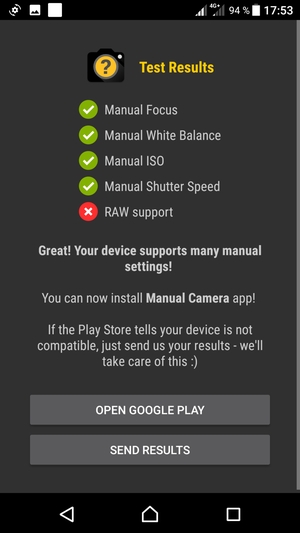 |
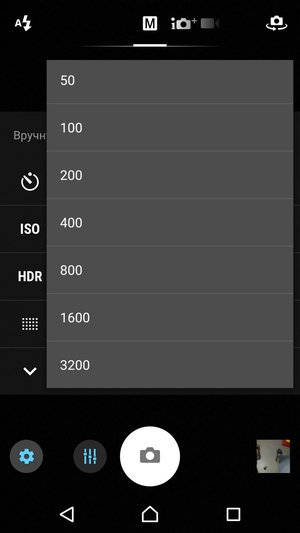 |
 |
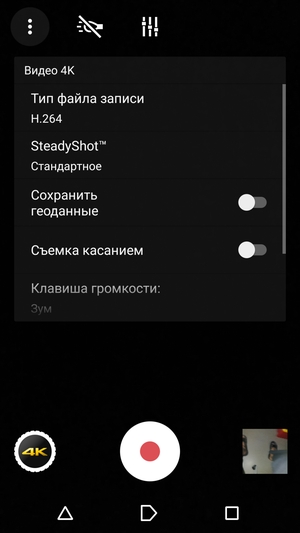 |
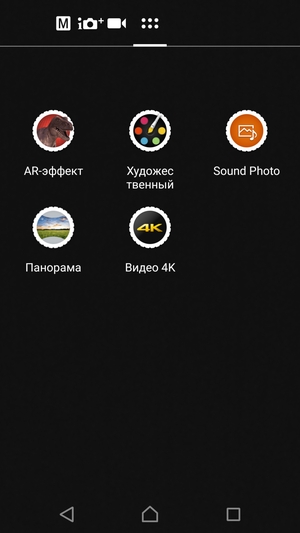 |
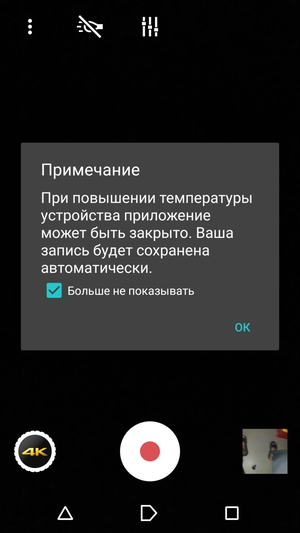 |
The camera can shoot video in maximum 4K resolution, but this mode is selected in the menu separately. There is also a shooting mode at 60 fps, normal Full HD @ 30 fps, as well as the aforementioned slow motion. Unlike Huawei smartphones, here for both 4K video and 60 fps, the H.264 codec is used, not H.265. The camera copes well with video shooting. Focusing does not fail, there are no jerks, no artifacts, the image is bright and detailed. Sound recording is made at a decent level, the noise reduction system also copes with its tasks.
- Movie # 1 (111 MB, 3840 × [email protected] fps, H.264, AAC)
- Movie # 2 (34 MB, 1920 × [email protected] fps, H.264, AAC)
- Movie # 3 (40 MB, 1920 × [email protected] fps, H.264, AAC)
 |
Quite good sharpness across the frame. |
 |
Good detail in the middle of the frame, but large areas of blur are noticeable on the sides. |
 |
The camera copes well with macro photography. |
 |
The text has been worked out well. |
 |
Quite good detail in the distant shots. There are still many areas of confusion. |
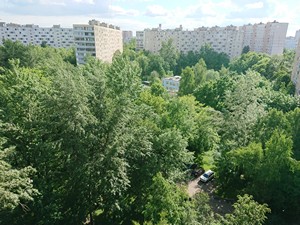 |
The detail is good only in the middle of the frame. |
We also tested the camera on a laboratory bench using our method.


The camera turned out to be good, but this time I can't call it flagship. Something strange immediately catches the eye. software processing, inherent more in the middle segment of cameras. There are huge areas of blur that are completely unjustified. We, of course, know that Sony is in the habit of refining cameras by the time of the start of sales, but for now it is difficult to argue that these zones will disappear. In the center of the frame, the detailing is at a very good level, but in its current form the camera can only be recommended for documentary shooting.
The laboratory bench confirms a good resolution in the center of the frame, but only at good lighting... However, the edge of the frame isn't too bad either. But the flash of the camera is very weak. Hopefully, with the updates, the camera manages to curb its noise and geometric distortion.
This time we did not show the resolution in the 12 Mp shooting mode on the graphs, since it does not differ in anything from 20 Mp, except for the size of the picture. If earlier in the 8 megapixel mode the camera used the sensor area of about 16 megapixels, then shrinking the image and increasing the relative resolution, now it does not use such tricks, so geometry distortion and sharpness at the edges do not improve. Nevertheless, even a simple reduction in the image size to 12 megapixels will increase the relative resolution and detail, that is, use the same area more efficiently, so it makes sense to shoot not at the maximum resolution. However, this is true for almost all smartphone cameras.
Telephone part and communications
The smartphone, thanks to the new SoC, received a modem that theoretically supports data transfer at speeds up to 1 Gb / s in LTE networks Cat.16. In the city limits of the Moscow region, the device behaves confidently, does not lose connection in places of poor reception, and quickly re-establishes the connection. Bluetooth 5.0 is also supported, both Wi-Fi bands (2.4 and 5 GHz) are MIMO 2 × 2, there is NFC with support for Mifare Classic, so the device works with an application for travel documents. You can organize a wireless access point via Wi-Fi or Bluetooth. The reception quality in Wi-Fi networks also raises no objections. The USB Type-C connector supports connecting external devices in USB OTG mode. Data transfer speed between computer and smartphone using a cable via USB ports 3.1 Type-C is about 25MB / s.
There are no complaints about the operation of the navigation module, it can work with GPS (with A-GPS), and with the domestic Glonass, and with the Chinese Beidou. The first satellites during a cold start are detected within tens of seconds. The smartphone is equipped with a magnetic field sensor, on the basis of which the digital compass of navigation programs usually functions.
 |
 |
The platform supports active waiting for both SIM cards in 3G / 4G at the same time. That is, the card can be actively waiting in the network not only in 2G, but also in 3G, even if another card is assigned for data transmission in 3G / 4G. The interface allows you to select a specific SIM card for SMS, voice calls and data transfer in advance. Cards work in Dual mode SIM Dual Standby, there is only one radio modem.
 |
 |
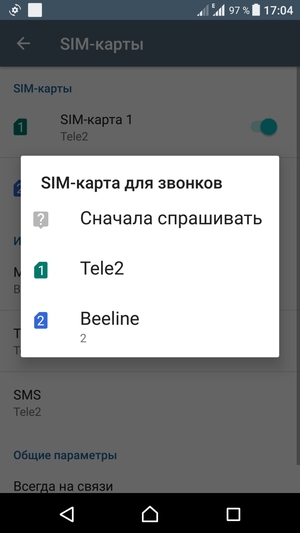 |
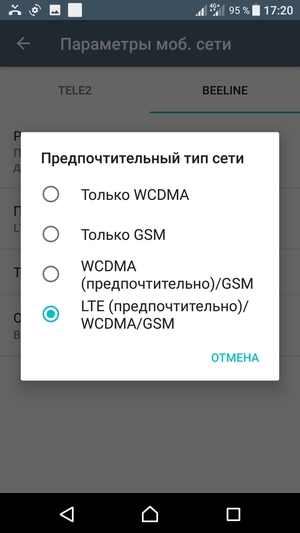 |
Software and multimedia
As software platform the Android OS of the latest version 7.1.1 is used with proprietary shell, which with the update has become the closest to the stock Android version, what is it in outward appearance, and on the internal structure. Now Sony smartphones inside resemble pure "Googlephones" more than any of the competitors. The once-present side-sliding panel in the launcher program menu has disappeared, mini-applications have disappeared, and the notification curtain, dialer and menu open programs began to look and function the same as in pure Android.
Also familiar is the set of preinstalled programs that have been moving from model to model over the years (Movie Creator, Sketch, AVG antivirus). SwiftKey is now the default keyboard on all Sony smartphones.
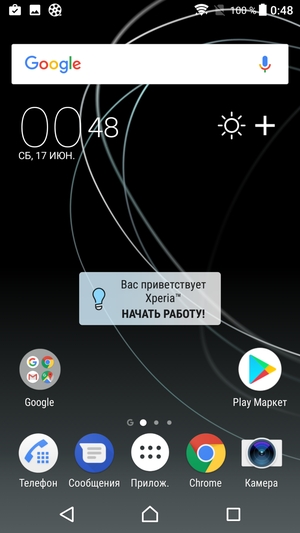 |
 |
 |
 |
To play musical compositions, the device uses its own player with a familiar set of settings: the user is traditionally given a choice between manual adjustment and automatic optimization all sound parameters with the comprehensive ClearAudio + function. The smartphone can play tracks in High-Resolution Audio quality, low quality tracks are pulled using the Digital Sound Enhancement Engine (DSEE HX) technology. The set includes a few more sound technologies, you can read more about all this on a separate page of the Sony website dedicated to sound technologies used in all modern top-end smartphones of the manufacturer.
The sound of the main speaker is rich and clear enough, not as loud as possible, but bass, a little dull. As usual, two speakers are used, located at the top and bottom of the front panel, they work in conjunction with surround technology S-Force Front Surround.
 |
 |
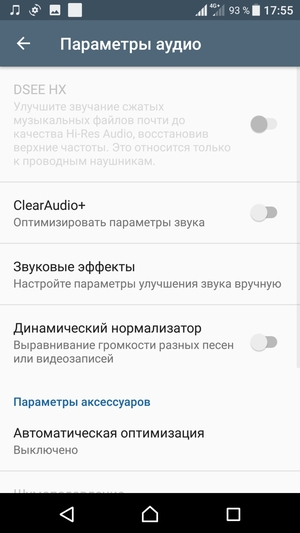 |
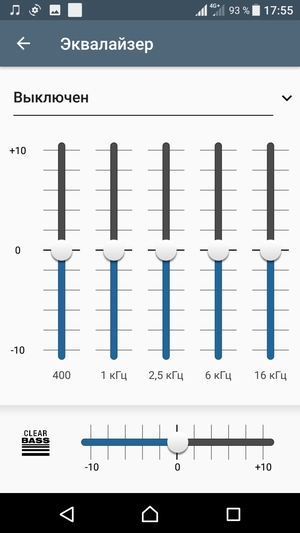 |
Performance
The Sony Xperia XZ Premium runs on Qualcomm's most powerful production mobile platform, the Snapdragon 835. The SoC features four Kryo processor cores in two clusters with a maximum frequency of 1.9 GHz to 2.4 GHz. The video accelerator Adreno 540 is responsible for processing graphics. The amount of RAM is 4 GB, of which 1.9 GB is free, about 49 GB of built-in memory is free out of 64 GB of the total volume.
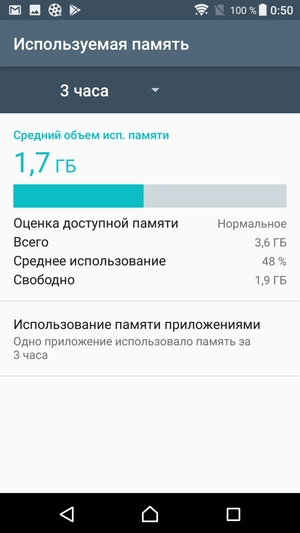 |
 |
Qualcomm Snapdragon 835 needs no special introduction. It is Qualcomm's flagship SoC and one of the most powerful mobile platforms in the world to date. It is much more powerful than its predecessor Snapdragon 821 and noticeably outperforms Huawei's flagship solution - HiSilicon Kirin 960 in all respects. There is no equal to it in the MediaTek portfolio either. Only the top platform can compare with the Snapdragon 835 Samsung Exynos 8895, on which the last Korean Galaxy flagships S8 and S8 +. They outperform Qualcomm's SoCs in benchmark tests, but graphic tests Qualcomm's platform is simply unmatched.
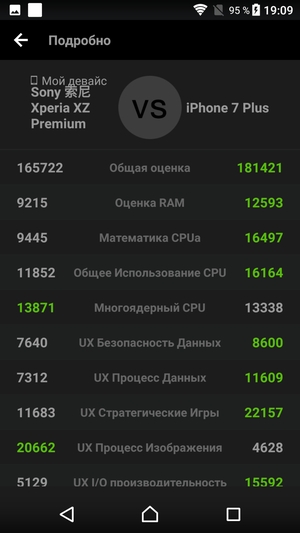 |
 |
In any case, this SoC provides the system with confident performance and, in real scenarios, allows the smartphone to cope with all tasks without exception. All games we tested, including Modern Combat 5, Mortal kombat X and others, go without the slightest lags at maximum settings. The Sony Xperia XZ Premium is a very powerful device that has a significant "headroom" for future updates.
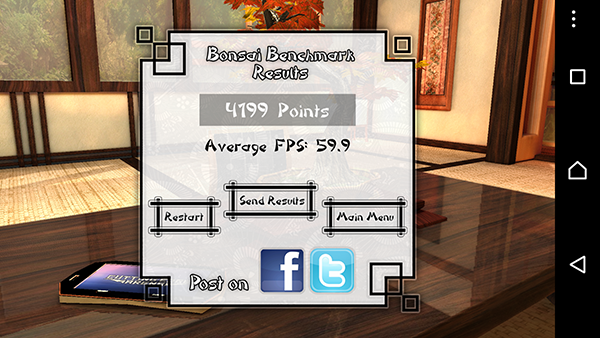
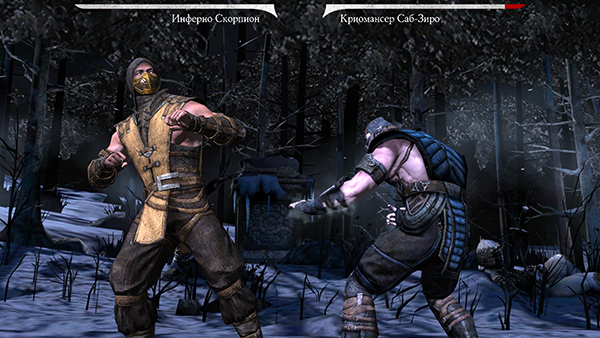
Benchmarking AnTuTu and GeekBench:
All the results obtained by us when testing the smartphone in the latest versions of popular benchmarks, we have summarized in tables for convenience. Several other devices from different segments are usually added to the table, also tested on similar latest versions benchmarks (this is done only for a visual assessment of the resulting dry numbers). Unfortunately, within the framework of one comparison, it is impossible to present the results from different versions benchmarks, so many worthy and relevant models remain "behind the scenes" - due to the fact that they once passed the "obstacle course" on previous versions test programs.
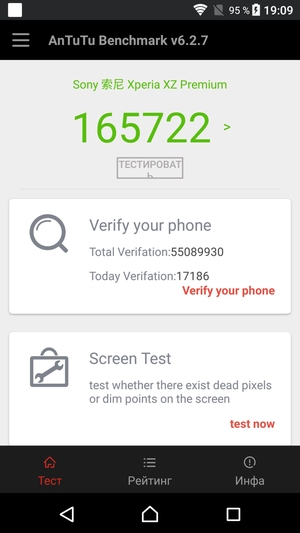 |
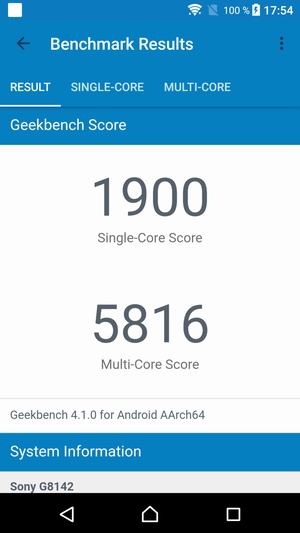 |
Testing the graphics subsystem in gaming tests 3DMark, GFXBenchmark and Bonsai Benchmark:
When testing in 3DMark for the highest performing smartphones, it is now possible to run the application in Unlimited mode, where the rendering resolution is fixed at 720p and VSync is disabled (which can cause the speed to rise above 60 fps).
| Sony Xperia XZ Premium (Qualcomm Snapdragon 835) |
Lg g6 (Qualcomm Snapdragon 821) |
Huawei P10 Plus (HiSilicon Kirin 960) |
Meizu Pro 6 Plus (Samsung Exynos 8890 Octa) |
Samsung Galaxy S8 + (Samsung Exynos 8895 Octa) |
|
| 3DMark Ice Storm Sling Shot (more is better) |
3236 | 2409 | 1666 | 1869 | 2628 |
| GFXBenchmark Manhattan ES 3.1 (Onscreen, fps) | 42 | 12 | 10 | 13 | 19 |
| GFXBenchmark Manhattan ES 3.1 (1080p Offscreen, fps) | 41 | 24 | 17 | 24 | 36 |
| GFXBenchmark T-Rex (Onscreen, fps) | 60 | 38 | 39 | 52 | 57 |
| GFXBenchmark T-Rex (1080p Offscreen, fps) | 112 | 61 | 55 | 71 | 103 |
 |
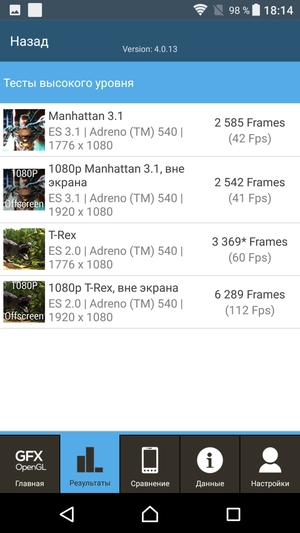 |
Browser cross-platform tests:
As for benchmarks for evaluating the speed of the javascript engine, you should always make allowances for the fact that the results in them significantly depend on the browser in which they are launched, so that the comparison can be truly correct only on the same OS and browsers, and this possibility is available when testing not always. In the case of Android OS, we always try to use Google Chrome.
 |
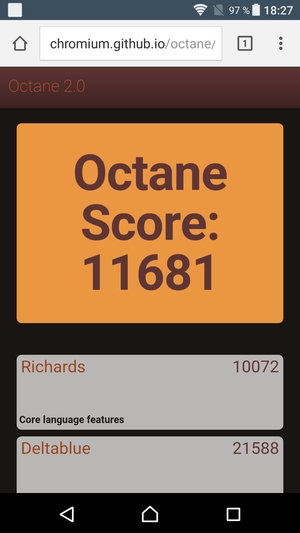 |

results AndroBench test on the speed of working with memory:

Heat images
Below is a thermal image back surface obtained after 10 minutes of running the battery test in the GFXBenchmark program:
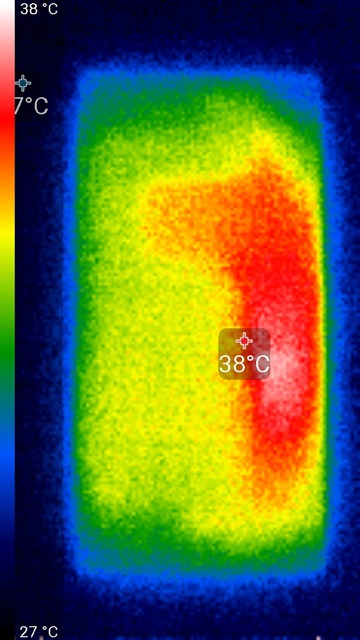
Heating is strongly localized on the left side of the device, which apparently corresponds to the location of the SoC. According to the heat chamber, the maximum heating was 38 degrees (at an ambient temperature of 24 degrees), which is not very much.
Video playback
To test the "omnivorous" video playback (including support for various codecs, containers and special features, such as subtitles), we used the most common formats, which make up the bulk of the content available on the Web. Note that it is important for mobile devices to have support for hardware video decoding at the chip level, since it is often impossible to process modern versions using processor cores alone. Also, do not expect a mobile device to decode everything, since the leadership in flexibility belongs to the PC, and no one is going to challenge it. All results are tabulated.
| Format | Container, video, sound | MX Video Player | Native video player |
| 1080p H.264 | MKV, H.264 1920 × 1080, 24 fps, AAC | reproduced normally | plays with delays |
| 1080p H.264 | MKV, H.264 1920 × 1080, 24 fps, AC3 | reproduced normally | |
| 1080p H.265 | MKV, H.265 1920 × 1080, 24 fps, AAC | reproduced normally | plays with delays |
| 1080p H.265 | MKV, H.265 1920 × 1080, 24 fps, AC3 | reproduced normally | the video plays normally, there is no sound |
Further video playback testing was done by Alexey Kudryavtsev.
We could not theoretically test the possible support of adapters for outputting images to an external device due to the lack of an adapter option that can be connected to the USB Type-C port, so we had to limit ourselves to testing the output of video files on the screen of the device itself. To do this, we used a set of test files with an arrow and a rectangle moving one division per frame (see "Methodology for testing video playback and display devices. Version 1 (for mobile devices).) Red marks indicate possible problems related to the playback of the respective files.
According to the criterion for outputting frames, the quality of video playback on the screen of the smartphone itself is good, since frames (or groups of frames) can (but are not required) to be displayed with more or less uniform intervals and, in most cases, without frame drops. When playing video files with a resolution of 1080p (1920 x 1080 pixels), the image of the video file itself is displayed exactly on the edge of the screen. The brightness range displayed on the screen corresponds to the standard range of 16-235: all gradations are displayed in the shadows and highlights. Recall that when watching movies, you need to select the mode Professional in the screen settings.
Battery life
Non-removable accumulator battery installed in the Sony Xperia XZ Premium does not have the largest capacity of 3230 mAh - in a large and heavy case, you could probably fit even more. Moreover, the smartphone has a powerful hot SoC and a large screen with a very high resolution. All this leads to increased power consumption of the system and, as a consequence, to rather modest results of autonomy for such a battery.
Testing has traditionally been conducted at typical power consumption levels without using power saving features. Naturally, there is a proprietary energy-saving Smart Stamina mode, and the already familiar Qnovo Adaptive Charging technology is responsible for a more gentle attitude to battery charging.
Continuous reading in the Moon + Reader program (with a standard, light theme) at a minimum comfortable brightness level (the brightness was set to 100 cd / m2) with auto scrolling lasted a little more than 15 hours until the battery was completely discharged, and with continuous video viewing in high quality (720p ) with the same brightness level through home network The Wi-Fi device does not even last up to 10 hours. At the same time, in 3D games mode, the smartphone can work for quite a long time, more than 7.5 hours, that is, it turns out that the device "sags" only in the video viewing mode.
The smartphone on the Qualcomm platform naturally supports proprietary fast charging Quick charge 3.0, but in practice we could not verify this, since the test sample arrived to us without a complete network adapter... From a conventional charger with a maximum output current of 1.5 A, the device is charged for 3 hours with a current of 1.4 A at a voltage of 5 V. Wireless charging the smartphone does not support.
Outcome
The device has been presented in Russian retail since the beginning of summer, the official cost of the Sony Xperia XZ Premium is 55 thousand rubles. The price is maximum, and products of this price segment everything should be perfect, because competitors are the most powerful and popular models of our time, for example Samsung Galaxy S8 / S8 +, LG G6. What does the new Japanese flagship have? The Sony Xperia XZ Premium has a decent camera with an unusual, if not essential, super slow motion function, one of the most powerful mobile platforms in the world with the widest communication capabilities... A noticeable plus is the presence of moisture protection, in the new season it is also provided with top-end Samsung smartphones, Apple and LG. The screen has the highest resolution and for once a perfect profile system, allowing you to display either bright and colorful, or standard sRGB-picture. The combination of a powerful SoC and a bright screen with an average battery capacity leads to the fact that the hero of the review has far from the highest autonomy among modern flagships. Samsung, LG and Huawei devices are certainly doing better with this. As a result, it turns out that in some ways the hero of the review is inferior to his competitors, and in some ways he is on the same level with them, but Sony smartphone The Xperia XZ Premium certainly has its own flavor, which is able to attract the attention of fans of this brand.
Information about the brand, model and alternative names of a specific device, if any.
Design
Information about the dimensions and weight of the device, presented in different units of measurement. Used materials, offered colors, certificates.
| Width Width information - refers to the horizontal side of the device in its standard orientation during use. | 77 mm (millimeters) 7.7 cm (centimeters) 0.25 ft (feet) 3.03 in (inches) |
| Height Height information - refers to the vertical side of the device in its standard orientation during use. | 156 mm (millimeters) 15.6 cm (centimeters) 0.51 ft (feet) 6.14 in (inches) |
| Thickness Information about the thickness of the device in different units measurements. | 7.9 mm (millimeters) 0.79 cm (centimeters) 0.03 ft (feet) 0.31 in (inches) |
| Weight Information about the weight of the device in different units of measurement. | 195 g (grams) 0.43 lbs (pounds) 6.88 oz (ounces) |
| Volume The approximate volume of the device, calculated based on the dimensions provided by the manufacturer. Refers to devices with a rectangular parallelepiped shape. | 94.89 cm³ (cubic centimeters) 5.76 in³ (cubic inches) |
| Colors Information about the colors in which this device is offered for sale. | Black Chromium Bronze |
| Materials for the manufacture of the case Materials used for the manufacture of the device body. | Aluminium alloy Glass |
| Certification Information about the standards by which this device is certified. | IP65 IP68 |
SIM card
A SIM card is used in mobile devices to store data that certifies the authenticity of mobile service subscribers.
Mobile networks
A mobile network is a radio system that allows multiple mobile devices to communicate with each other.
| Gsm GSM (Global System for Mobile Communications) is designed to replace the analog mobile network (1G). For this reason, GSM is often referred to as a 2G mobile network. It is enhanced by the addition of GPRS (General Packet Radio Services) and later EDGE (Enhanced Data rates for GSM Evolution) technologies. | GSM 850 MHz GSM 900 MHz GSM 1800 MHz GSM 1900 MHz |
| UMTS UMTS stands for Universal Mobile Telecommunications System. It is based on the GSM standard and refers to 3G mobile networks. Developed by 3GPP and its biggest advantage is to provide more speed and spectral efficiency thanks to W-CDMA technology. | UMTS 800 MHz UMTS 850 MHz UMTS 900 MHz UMTS 1900 MHz UMTS 2100 MHz UMTS 800 MHz (B21) |
| LTE LTE (Long Term Evolution) is defined as a fourth generation (4G) technology. It is developed by 3GPP based on GSM / EDGE and UMTS / HSPA with the aim of increasing the capacity and speed of wireless mobile networks. The subsequent development of technologies is called LTE Advanced. | LTE 700 MHz Class 13 LTE 700 MHz Class 17 LTE 800 MHz LTE 850 MHz LTE 900 MHz LTE 1700/2100 MHz LTE 1800 MHz LTE 1900 MHz LTE 2100 MHz LTE 2600 MHz LTE-TDD 1900 MHz (B39) LTE-TDD 2300 MHz (B40) LTE-TDD 2500 MHz (B41) LTE-TDD 2600 MHz (B38) LTE 700 MHz (B12) LTE 700 MHz (B28) LTE 800 MHz (B19) LTE 850 MHz (B26) LTE 700 MHz (B29) LTE 1500 MHz (B32) |
Mobile technology and data rates
Communication between devices in mobile networks is carried out using technologies that provide different data transfer rates.
Operating system
An operating system is the system software that controls and coordinates the operation of hardware components in a device.
SoC (System on Chip)
A system on a chip (SoC) integrates all the major hardware components of a mobile device into a single chip.
| SoC (System on Chip) A system on a chip (SoC) integrates various hardware components such as a processor, graphics processor, memory, peripherals, interfaces, etc., as well as the software required for their operation. | Qualcomm Snapdragon 835 MSM8998 |
| Technological process Information about the technological process by which the chip is manufactured. The value in nanometers is half the distance between the elements in the processor. | 10 nm (nanometers) |
| Processor (CPU) The main function of the processor (CPU) of a mobile device is to interpret and execute instructions contained in software applications. | 4x 2.45 GHz Kryo, 4x 1.9 GHz Kryo |
| Processor size The capacity (bits) of the processor is determined by the size (in bits) of registers, address buses and buses for data. 64-bit processors offer better performance than 32-bit processors, which in turn are more efficient than 16-bit processors. | 64 bit |
| Instruction set architecture Instructions are commands with which the software sets / controls the processor. Information about the instruction set (ISA) that the processor can execute. | ARMv8-A |
| Number of processor cores The processor core executes program instructions... There are processors with one, two or more cores. Having more cores increases performance by allowing multiple instructions to execute in parallel. | 8 |
| CPU clock speed The clock speed of a processor describes its speed in cycles per second. It is measured in megahertz (MHz) or gigahertz (GHz). | 2450 MHz (megahertz) |
| Graphics processing unit (GPU) A graphics processing unit (GPU) handles computation for a variety of 2D / 3D graphics applications. In mobile devices, it is most commonly used by games, consumer interfaces, video applications, and more. | Qualcomm Adreno 540 |
| Clock frequency GPU Speed is the clock speed of the GPU and is measured in megahertz (MHz) or gigahertz (GHz). | 710 MHz (megahertz) |
| Volume random access memory(RAM) Random access memory (RAM) used operating system and all installed applications. The data that is saved in the RAM is lost after the device is turned off or restarted. | 4 GB (gigabytes) |
| Memory type (RAM) Information about the type of random access memory (RAM) used by the device. | LPDDR4X |
| Number of RAM channels Information about the number of RAM channels which are integrated into the SoC. More channels means higher data rates. | Two-channel |
| RAM frequency The frequency of the RAM determines its speed of operation, more specifically, the speed of reading / writing data. | 1866 MHz (megahertz) |
Built-in memory
Each mobile device has built-in (non-removable) fixed memory.
Memory cards
Memory cards are used in mobile devices to increase the storage space for data.
Screen
The screen of a mobile device is characterized by its technology, resolution, pixel density, diagonal length, color depth, etc.
| Type / technology One of the main characteristics of the screen is the technology by which it is made and on which the image quality of information directly depends. | IPS |
| Diagonal On mobile devices, screen size is expressed in terms of the length of its diagonal, measured in inches. | 5.5 in (inches) 139.7 mm (millimeters) 13.97 cm (centimeters) |
| Width Approximate screen width | 2.7 in (inches) 68.49 mm (millimeters) 6.85 cm (centimeters) |
| Height Approximate screen height | 4.79 in (inches) 121.76 mm (millimeters) 12.18 cm (centimeters) |
| Aspect ratio The aspect ratio of the long side of the screen to its short side | 1.778:1 16:9 |
| Permission Screen resolution shows the number of pixels horizontally and vertically on the screen. Higher resolution means sharper image detail. | 2160 x 3840 pixels |
| Pixel density Information about the number of pixels per centimeter or inch of the screen. Higher density allows information to be shown on the screen in clearer detail. | 801 ppi (pixels per inch) 314 ppcm (pixels per centimeter) |
| Color depth Screen color depth reflects the total number of bits used for color components in one pixel. Information about the maximum number of colors the screen can display. | 24 bit 16777216 flowers |
| Screen footprint The approximate percentage of the display area on the front of the device. | 69.65% (percent) |
| Other characteristics Information about other functions and features of the screen. | Capacitive Multitouch Scratch resistant |
| Corning Gorilla Glass 5 Triluminos display for mobile X-Reality display Dynamic contrast enhancement 1000: 1 contrast ratio 700 cd / m² 138% sRGB |
Sensors
Different sensors perform different quantitative measurements and convert physical metrics into signals that can be recognized by the mobile device.
Main camera
The main camera of a mobile device is usually located on the back of the body and is used for photo and video shooting.
| Sensor model | Sony IMX400 Exmor RS |
| Sensor type | |
| ISO (light sensitivity) | 100 - 12800 |
| Diaphragm | f / 2.0 |
| Focal length | 4.4 mm (millimeters) |
| Flash type The most common types of flashes in mobile cameras are LED and Xenon flashes. LED-flashes give softer light and, unlike brighter xenon ones, are also used for video filming. | LED |
| Image Resolution One of the main characteristics of cameras on mobile devices is their resolution, which shows the number of pixels horizontally and vertically in an image. | 5057 x 3796 pixels 19.2 MP (megapixels) |
| Video resolution Information about the maximum supported resolution for video recording by the device. | 3840 x 2160 pixels 8.29 MP (megapixels) |
Information about the maximum number of frames per second (fps) supported by the device when shooting video at maximum resolution. Some of the main standard video capture and playback speeds are 24p, 25p, 30p, 60p. | 30 frames / sec (frames per second) |
| Specifications Information about other software and hardware features associated with the main camera to improve its functionality. | Autofocus Burst shooting Digital zoom Optical image stabilization Geographic tags Panoramic shooting HDR shooting Touch focus Face recognition Adjusting the white balance ISO setting Exposure compensation Self-timer Scene selection mode |
| Pixel size - 1.22 μm Hybrid autofocus Triple image sensing RGBC-IR sensor 6-element lens Wide angel G-lens Focal length (35 mm equivalent) - 25 mm 720p @ 960 fps |
Additional camera
Additional cameras are usually mounted above the screen of the device and are used mainly for video calls, gesture recognition, etc.
| Sensor model Information about the manufacturer and model of the photocell used in the camera of the device. | Sony Exmor RS |
| Sensor type Digital cameras use photo sensors to take photographs. The sensor, as well as the optics, are one of the main factors in the quality of the camera in a mobile device. | CMOS (complementary metal-oxide semiconductor) |
| Sensor size Information about the dimensions of the photosensor used in the device. Typically, cameras with a larger sensor and lower pixel density offer more high quality images despite the lower resolution. | 4.69 x 3.52 mm (millimeters) 0.23 in (inches) |
| Pixel size The smaller pixel size of the photosensor allows more pixels per unit area to be used, thus increasing the resolution. On the other hand, a smaller pixel size can have a negative impact on image quality at high ISO sensitivity levels. | 1.127 μm (micrometers) 0.001127 mm (millimeters) |
| Crop factor The crop factor is the ratio between the size of a full-frame sensor (36 x 24 mm, equivalent to a frame of standard 35 mm film) and the size of the device's photo sensor. The number shown is the ratio of the diagonals of the full frame sensor (43.3 mm) to the photo sensor specific device. | 7.38 |
| ISO (light sensitivity) ISO values determine the level of light sensitivity of the photosensor. A lower value means weaker light sensitivity, and vice versa - a higher value means a higher light sensitivity, i.e. better ability of the sensor to work in low light conditions. | 100 - 6400 |
| Diaphragm Aperture (f-number) is the size of the aperture opening that controls the amount of light reaching the photosensor. A lower f-number means a larger aperture opening. | f / 2.0 |
| Focal length Focal length is the distance in millimeters from the photosensor to the optical center of the lens. Equivalent focal lengths are also indicated, providing the same field of view with a full frame camera. | 2.98 mm (millimeters) 21.99 mm (millimeters) * (35 mm / full frame) |
| Image Resolution Information about the maximum resolution of the secondary camera when shooting. In most cases, the resolution of the secondary camera is lower than that of the main camera. | 4160 x 3120 pixels 12.98 MP (megapixels) |
| Video resolution Information about the maximum supported resolution for video recording additional camera. | 1920 x 1080 pixels 2.07 MP (megapixels) |
| Video - frame rate / frames per second. Information about the maximum number of frames per second (fps) supported by the secondary camera when shooting video at maximum resolution. | 30 frames / sec (frames per second) |
Audio
Information about the type of speakers and audio technology supported by the device.
Radio
The radio of the mobile device is a built-in FM receiver.
Locating
Information about the navigation and positioning technologies supported by the device.
Wi-Fi
Wi-Fi is a technology that enables wireless communication for transferring data over short distances between various devices.
Bluetooth
Bluetooth is a standard for secure wireless transfer of data between different types of devices over short distances.
| Version There are several versions of Bluetooth, each of which improves communication speed, coverage, and makes it easier to find and connect devices. Information about the Bluetooth version of the device. | 5.0 |
| Specifications Bluetooth uses different profiles and protocols to enable faster communication, energy savings, better device discovery, and more. Some of these profiles and protocols that the device supports are shown here. | A2DP (Advanced Audio Distribution Profile) AVRCP (Audio / Visual Remote control Profile) DIP (Device ID Profile) GAVDP (Generic Audio / Video Distribution Profile) GAP (Generic Access Profile) HDP (Health Device Profile) HFP (Hands-Free Profile) HID (Human Interface Profile) HSP (Headset Profile) LE (Low Energy) MAP (Message Access Profile) OPP (Object Push Profile) PAN (Personal Area Networking Profile) PBAP / PAB (Phone Book Access Profile) SPP (Serial Port Protocol) |
USB
USB (Universal Serial Bus) is an industry standard that allows different electronic devices to exchange data.
Headphone jack
This is an audio connector, which is also called an audio connector. The most widely used standard in mobile devices is the 3.5mm headphone jack.
Connecting devices
Information about other important connection technologies supported by the device.
Browser
A web browser is a software application for accessing and viewing information on the Internet.
| Browser Information about some of the main features and standards supported by the device browser. | Html HTML5 CSS 3 |
Mobile devices support different audio file formats and codecs, which respectively store and encode / decode digital audio data.
| Formats / Codecs sound files A list of some of the major audio file formats and codecs supported by the device as standard. | AAC (Advanced Audio Coding) AAC + / aacPlus / HE-AAC v1 AMR / AMR-NB / GSM-AMR (Adaptive Multi-Rate, .amr, .3ga) AMR-WB (Adaptive Multi-Rate Wideband, .awb) aptX / apt-X eAAC + / aacPlus v2 / HE-AAC v2 FLAC (Free Lossless Audio Codec, .flac) M4A (MPEG-4 Audio, .m4a) MIDI MP3 (MPEG-2 Audio Layer II, .mp3) OGG (.ogg, .ogv, .oga, .ogx, .spx, .opus) WMA (Windows Media Audio, .wma) WAV (Waveform Audio File Format, .wav, .wave) LDAC DSEE HX DSD |
Video file formats / codecs
Mobile devices support different video file formats and codecs, which respectively store and encode / decode digital video data.
Battery
Mobile device batteries differ in their capacity and technology. They provide the electrical charge required for their function.
| Capacity Battery capacity indicates the maximum charge it can store, measured in milliampere-hours. | 3230 mAh (milliampere-hours) |
| A type The type of battery is determined by its structure and, more precisely, by the chemicals used. Exists different types lithium-ion and lithium-ion-polymer batteries are most commonly used in mobile devices. | Li-polymer |
| Technology fast charging Fast charging technologies differ from each other in terms of energy efficiency, supported output power, control over the charging process, temperature, etc. Device, battery and Charger must be compatible with respect to fast charging technology. | Qualcomm Quick Charge 3.0 |
| Specifications Information about some additional characteristics of the device's battery. | Fast charging Non-removable |
Specific Absorption Rate (SAR)
SAR levels refer to the amount of electromagnetic radiation absorbed by the human body when using a mobile device.
| SAR level for head (EU) The SAR level indicates the maximum amount electromagnetic radiation to which the human body is exposed if you hold a mobile device close to your ear in a talking position. In Europe, the maximum SAR value for mobile devices is limited to 2 W / kg per 10 grams of human tissue. This standard established by the CENELEC committee in accordance with IEC standards, following the ICNIRP guidelines of 1998. | 1.21 W / kg (Watts per kilogram) |
| Body SAR (EU) The SAR level indicates the maximum amount of electromagnetic radiation that a person's body is exposed to when holding a mobile device at hip level. The highest SAR value for mobile devices in Europe is 2 W / kg per 10 grams of human tissue. This standard was established by the CENELEC committee in accordance with ICNIRP guidelines from 1998 and IEC standards. | 1.16 W / kg (Watts per kilogram) |
| Head SAR (US) The SAR level indicates the maximum amount of electromagnetic radiation that a person's body is exposed to if a mobile device is held close to the ear. The maximum value used in the United States is 1.6 W / kg per gram of human tissue. US mobile devices are controlled by CTIA and the FCC conducts tests and sets their SAR values. | 0.78 W / kg (Watts per kilogram) |
| Body SAR (US) The SAR level indicates the maximum amount of electromagnetic radiation that a person's body is exposed to when holding a mobile device at hip level. The highest SAR value in the United States is 1.6 W / kg per gram of human tissue. This value is set by the FCC and CTIA monitors mobile devices for compliance with this standard. | 0.44 W / kg (Watts per kilogram) |

